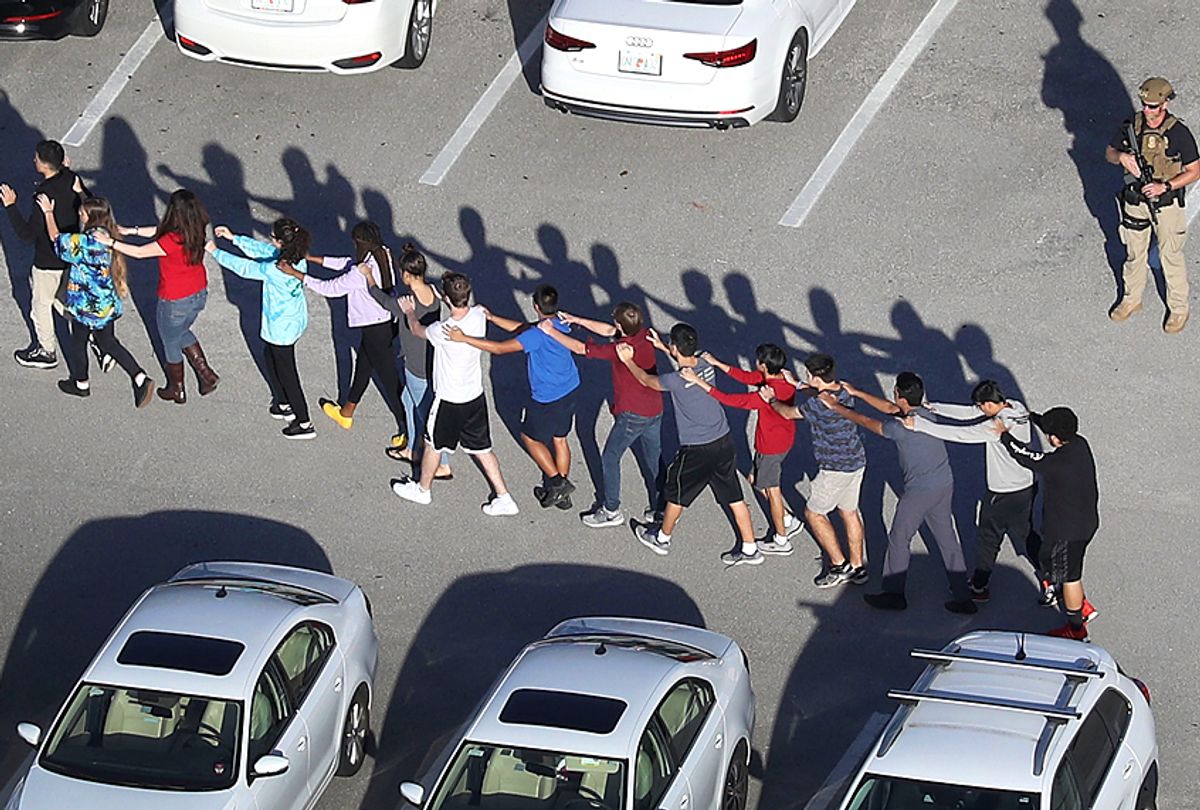Run, hide, fight.
Students, teachers and staff have three basic options in the event of a school shooting, according to a 2013 federal guide on reducing gun violence, produced by the Departments of Education, Homeland Security and Justice.
As a sign of the times, 67 percent of school districts now require "active shooter exercises," according to a 2016 report from the Government Accountability Office. Fifteen districts and 19 states reported plans to address specific active shooter threats or hazards, according to the GAO report. Florida is one of them.
On Wednesday, a shooting at Marjory Stoneman Douglas High School in Parkland, Florida, claimed 17 lives. Fourteen others were left wounded, five in critical condition.
The deadly rampage in Parkland is raising new questions about whether schools and government officials are doing enough to keep students safe.
At Douglas, the faculty, administration and students had "active shooter training," Broward County school board member Donna Korn told USA Today.
“We have had active shooter training at our schools, and so the response was one that had been anticipated, although you can never fully anticipate one of these events actually occurring,” Korn said. "We’ve got the people prepared, we have prepared the campuses but sometimes people still find a way to let these horrific things happen."
It's unclear if any planning, preparation or mantra like "run, hide, fight" could have stopped Florida shooting suspect Nikolas Cruz. The 19-year-old was apparently familiar with Marjory Stoneman Douglas' emergency plans, Korn said. He was a former student of the high school.
Since the beginning of 2018, there have been 18 instances involving weapons on school property across the country, gun-control advocacy group Everytown for Gun Safety reports. While that total includes incidents that are not considered school shootings, such as suicides, fatal and nonfatal assaults and unintentional shootings, an FBI report on "active shooters" between 2000 and 2016 found that mass shootings in the U.S. are becoming deadlier. Four of the five deadliest shootings in American history – at a Las Vegas concert (58), an Orlando nightclub (49), Virginia Tech (32), Sandy Hook Elementary School (27) and the Texas First Baptist Church (26) – happened in the last five years. The slaughter in Las Vegas, which left 59 dead and more than 500 injured in 2017, was not included in the report.
Interestingly, data shows that schools are the second-highest risk location, after workplaces and other commercial buildings. As a result, schools are perhaps preparing for the worst.
Thirty-two states have passed laws that require schools to have emergency safety plans, including fire, lockdown and evacuation, according to the GAO report. Six states – Arkansas, Illinois, Missouri, New Jersey, Oklahoma and Tennessee – went even further, introducing mandatory active shooter drills each year. There is no consensus on what these drills and trainings look like, but Missouri requires school staff to participate in shooting simulations with police officers.
Data collected by the National Center for Education Statistics reports similar findings. From 2003 to 2014, the percentage of public schools with a written plan for shooting procedures went up from 78.5 to 88.3 percent.
While the effectiveness of active shooting drills remains unclear, one thing is obvious: School leaders and lawmakers understand that mass shootings can occur in any community, in any school district, at any time and they need be ready.



Shares